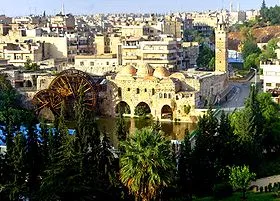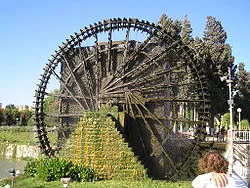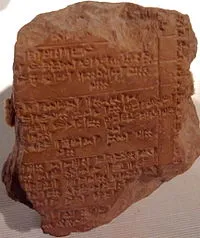Hama (Arabic: حماة Ḥamāh, [ħaˈmaː]; Syriac: ܚܡܬ Ḥmṭ, "fortress"; Biblical Hebrew: חֲמָת Ḥamāth) is a city on the banks of the Orontes River in west-central Syria. It is located 213 km (132 mi) north of Damascus and 46 kilometres (29 mi) north of Homs. It is the provincial capital of the Hama Governorate. With a population of 854,000 (2009 census), Hama is the fourth-largest city in Syria after Aleppo, Damascus and Homs.[2][3]
The city is renowned for its seventeen norias used for watering the gardens, which are locally claimed to date back to 1100 BC. Though historically used for purpose of irrigation, the norias exist today as an almost entirely aesthetic traditional show.

The ancient settlement of Hamath was occupied from the early Neolithic to the Iron Age. Remains from the Chalcolithic have been uncovered by Danish archaeologists on the mount on which the former citadel once stood.[4] The excavation took place between 1931 and 1938 under the direction of Harald Ingholt. The stratigraphy is very generalized, which makes detailed comparison to other sites difficult. Level M (6 m or 20 ft thick) contained both white ware (lime-plaster) and true pottery. It may be contemporary with Ras Shamra V (6000–5000 BC). The overlying level L dates to the Chalcolithic Halaf culture.


Neo-Hittites
By the turn of the millennium, the centralized old Hittite Empire had fallen, and Hama is attested as the capital of one of the prosperous Syro-Hittite states known from the Hebrew Bible as Hamath (Aramaic: Ḥmt; Hittite: Amatuwana;[5] Hebrew: חֲמָת Ḥəmåṯ), which traded extensively.

Thanks